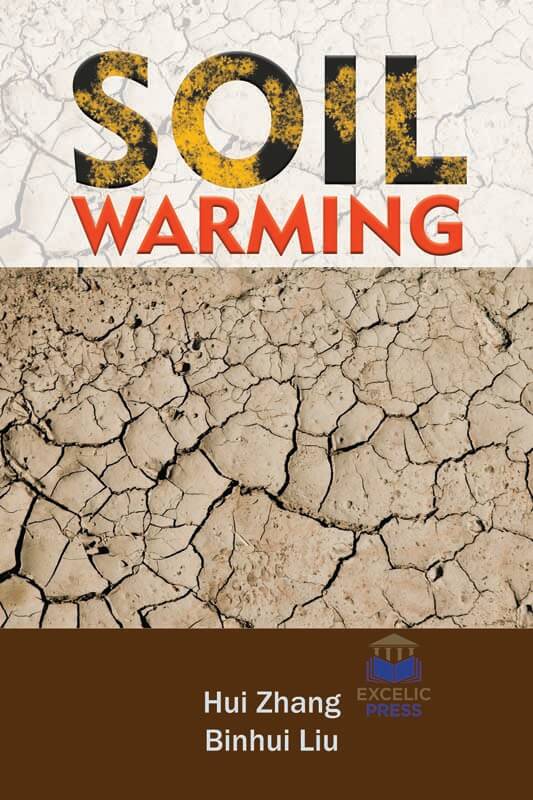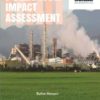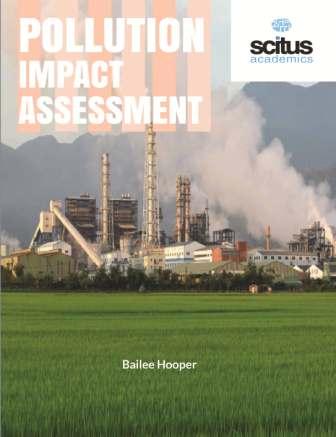Since 1880, there has been a recorded increase of 0.8°C in the average global surface temperature, with a predicted rise by another 1.5°C in the next 100 years (IPCC, 2014). A substantial amount of information is already available, which shows the adverse ecological impacts of global warming, and humans have already started feeling its impacts. Using the global mean surface air temperature, it has been determined that the reported increases in mean daily temperatures are due, at least partially, to differential changes in the maximum and minimum temperatures. Due to the wide range of thermal sensitivities exhibited by coexisting species, it is predicted that global warming will result in a significant alteration of species’ physiology, biotic interactions and ultimately ecosystem functioning. Soil temperatures may play important roles in agriculture production and human activity. Global warming has caused changes in soil temperatures.
This book aims to investigate the impact of environmental temperature on the diversity, size‐structure, and biomass of terrestrial plant and invertebrate communities. The book also explores the impact of soil warming on the plant metabolome of Icelandic grasslands. With climate change, ecological systems are being exposed to conditions that are outside the historic norm. Getting an understanding and learning how to predict the responses of ecosystems to these changes is integral in understanding societal responses. Experiments in which climate variables are manipulated in a controlled environment provide important insights that help in testing and developing mechanistic models of ecosystem reaction to climate change. Despite rapid changes in climate observed in many high latitudes and high altitude environments, controlled manipulations in these remote regions have largely been limited to passive experimental methods with variable effects on environmental factors. This book elaborates on a method of controlled soil warming which is can be applied at remote field locations and can be powered by alternate sources of energy. The effect that global warming has on soil organic matter, in terms of its structure, microbial communities, carbon content, and respiration response remains uncertain and widely debated. These effects are also often modulated or stay latent for a long period of time, meaning that short term experiments are not enough to study the responses of these ecosystems. This book closes with a study capitalized on a long-term reciprocal soil transplant experiment to examine the response of dryland soils to climate change.













Davidblics –
Kamagra Oral Jelly pas cher: kamagra en ligne – kamagra gel
BernardSwefe –
pharmacie en ligne sans ordonnance: pharmacie en ligne pas cher – Pharmacie en ligne livraison Europe pharmafst.com
BernardSwefe –
Achetez vos kamagra medicaments: Kamagra Commander maintenant – kamagra 100mg prix
Stevenhef –
canadian pharmacy phone number: Express Rx Canada – canadian pharmacy phone number
Stevenhef –
MedicineFromIndia: medicine courier from India to USA – indian pharmacy online
MichaelNot –
Medicine From India: indian pharmacy – indian pharmacy
MichaelNot –
indian pharmacy: indian pharmacy online shopping – reputable indian online pharmacy
MichaelNot –
top 10 pharmacies in india: Medicine From India – indian pharmacy online shopping
MichaelNot –
medicine courier from India to USA: MedicineFromIndia – online shopping pharmacy india
Michaelfom –
Medicine From India [url=https://medicinefromindia.shop/#]indian pharmacy online[/url] indian pharmacy
Brianpes –
vavada casino: vavada casino – вавада официальный сайт
Brianpes –
вавада казино: вавада казино – вавада
Kennethwhary –
вавада зеркало: вавада – вавада казино
Kennethwhary –
pin up az: pin up casino – pinup az
Kennethwhary –
пинап казино: pin up вход – пин ап казино
Kennethwhary –
пин ап зеркало: пин ап казино – пинап казино
Kennethwhary –
vavada casino: вавада казино – vavada
Kennethwhary –
pin up вход: пин ап зеркало – пин ап казино
Elmersob –
пин ап вход: пинап казино – pin up вход
AlbertoKew –
secure checkout ED drugs: cheap Cialis online – Cialis without prescription
AlbertoKew –
affordable ED medication: discreet shipping ED pills – secure checkout ED drugs
AlbertoKew –
legit Viagra online: fast Viagra delivery – legit Viagra online
Jeremysat –
buy modafinil online: modafinil legality – purchase Modafinil without prescription
Jeremysat –
trusted Viagra suppliers: buy generic Viagra online – discreet shipping
AlbertoKew –
best price Cialis tablets: discreet shipping ED pills – secure checkout ED drugs
AlbertoKew –
affordable ED medication: affordable ED medication – best price Cialis tablets
Jeremysat –
Viagra without prescription: generic sildenafil 100mg – buy generic Viagra online
AlbertoKew –
affordable ED medication: best price Cialis tablets – buy generic Cialis online
JudsonDIT –
order generic clomid without insurance: where buy cheap clomid now – can you buy clomid no prescription
JudsonDIT –
can i buy clomid without prescription: Clom Health – can i purchase cheap clomid without rx
JudsonDIT –
PredniHealth: prednisone without prescription.net – generic prednisone for sale
JudsonDIT –
order clomid no prescription: cost generic clomid without dr prescription – can i order clomid pills
JudsonDIT –
Amo Health Care: where can i buy amoxicillin over the counter uk – Amo Health Care
ScottTaups –
cialis best price: buy cialis tadalafil – where to get generic cialis without prescription
ScottTaups –
sanofi cialis: who makes cialis – cialis discount card
ScottTaups –
cialis online paypal: TadalAccess – generic cialis from india
ScottTaups –
cialis experience reddit: TadalAccess – does tadalafil work
CurtisFaill –
Ero Pharm Fast: order ed pills online – affordable ed medication
RodneyMeexy –
online pharmacy australia [url=https://pharmau24.shop/#]Pharm Au24[/url] Online medication store Australia
CurtisFaill –
Over the counter antibiotics for infection: buy antibiotics over the counter – buy antibiotics from india
Josephlelry –
Ero Pharm Fast: cheapest ed medication – Ero Pharm Fast
RodneyMeexy –
boner pills online [url=https://eropharmfast.com/#]Ero Pharm Fast[/url] Ero Pharm Fast
Josephlelry –
Online drugstore Australia: Medications online Australia – Online medication store Australia
CurtisFaill –
antibiotic without presription: BiotPharm – best online doctor for antibiotics
CurtisFaill –
online pharmacy australia: Online drugstore Australia – Pharm Au24
RodneyMeexy –
Online drugstore Australia [url=https://pharmau24.shop/#]Pharm Au 24[/url] pharmacy online australia
Josephlelry –
Ero Pharm Fast: Ero Pharm Fast – online erectile dysfunction
DavidBet –
https://biotpharm.com/# buy antibiotics for uti
CurtisFaill –
Licensed online pharmacy AU: Online drugstore Australia – online pharmacy australia
DavidBet –
http://pharmau24.com/# Buy medicine online Australia
CurtisFaill –
Ero Pharm Fast: Ero Pharm Fast – Ero Pharm Fast
CurtisFaill –
Over the counter antibiotics for infection: buy antibiotics online – buy antibiotics online
RodneyMeexy –
Buy medicine online Australia [url=https://pharmau24.com/#]Medications online Australia[/url] pharmacy online australia
DavidBet –
http://biotpharm.com/# buy antibiotics online
CurtisFaill –
Pharm Au24: Medications online Australia – Pharm Au 24